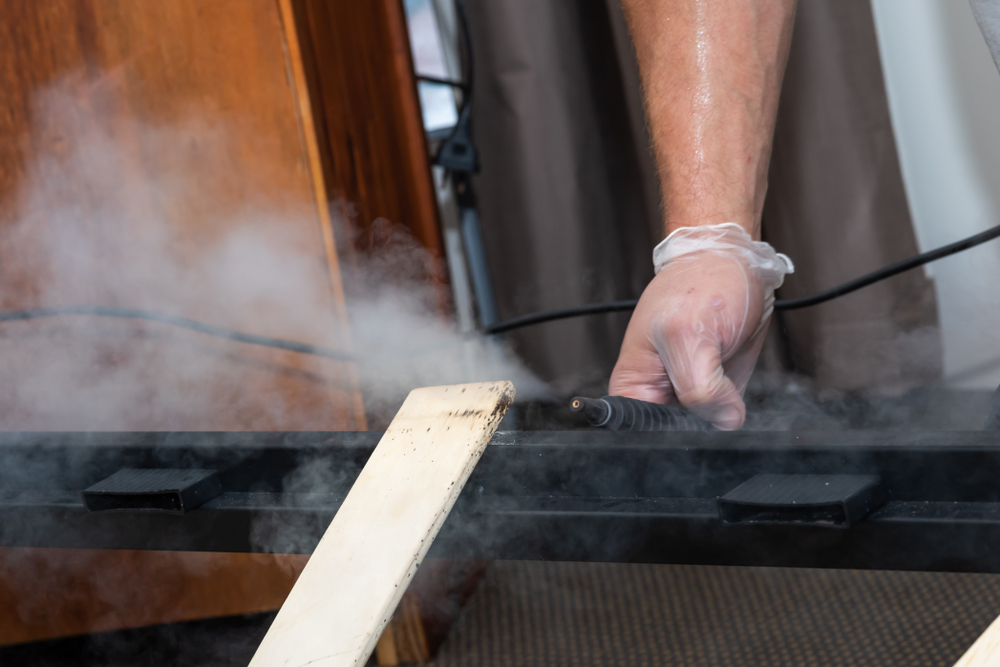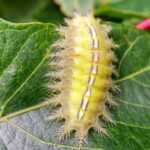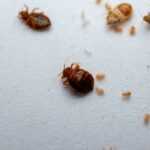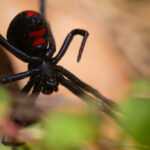Effective Bedbug Treatment Tips for Pest-Free Homes
Discover simple, effective methods to eliminate bedbugs and keep your home pest-free. Get practical tips for lasting protection.
Best Bedbug Treatment Methods to Keep Your Home Pest-Free
Dealing with bedbugs can be a nightmare. This comprehensive guide on bedbug treatment will walk you through understanding infestations, effective professional treatments, DIY methods, and future prevention tips to help you eliminate bed bugs and protect your home.
- Early detection of bed bug infestations is crucial; look for signs such as rusty blood stains, itchy welts, and dark fecal spots.
- Professional bedbug treatment options, including heat treatments and chemical treatments, often yield better results for severe infestations than DIY approaches.
- Preventative measures, such as regular inspections, removing clutter, and proper maintenance, are essential to avoid future bed bug problems.
Understanding Bed Bug Infestations
Bed bugs are tiny, elusive insects that can make their home in the most inconspicuous places. They often hide in mattress seams, box springs, bed frames, upholstered furniture, and cracks in other furniture, where bed bugs hide, making them difficult to detect and even harder to eliminate. These pests can travel between 5 and 20 feet from their hiding spots to find a blood meal, usually at night when we are asleep, leading to a potential bedbug infestation.
Early detection of a bed bug infestation can make all the difference. Watch for rusty blood stains on your bed sheets, dark fecal spots, and tiny eggs or shells. Bed bugs may also leave itchy welts on your skin, a telltale sign of their presence. While bed bugs prefer human blood, they can also feed on other mammals and birds, showcasing their adaptability and persistence.
Under favorable conditions, bed bugs can progress from egg to adult in about four to five weeks. This rapid reproduction rate can quickly escalate a minor infestation into a major problem. Recognizing their behavior and signs can help you stay one step ahead in effectively treating bed bugs.
Professional Bed Bug Treatment Options
When dealing with a significant bed bug infestation, professional help is often necessary. While DIY methods can be effective for minor issues, severe infestations require the expertise and tools of a professional pest control company. A bed bug exterminator can provide the targeted solutions needed for complete eradication and help prevent reinfestation.
Treatment plans from professionals are customized to handle the specific details of each infestation. Typically, these plans involve initial treatments and follow-up inspections to guarantee total elimination of bed bugs and infested items. The combination of professional experience and targeted treatments is key to solving a bed bug problem efficiently.
Heat Treatments
Heat treatments offer a chemical-free approach to managing bed bug populations effectively. Raising indoor temperatures to lethal levels for bed bugs, these treatments eradicate pests without pesticides. This approach is especially effective as it reaches areas chemicals might miss, like deep within mattress seams, bed frames, and upholstered furniture.
Incorporating heat treatments into an Integrated Pest Management (IPM) approach offers a comprehensive strategy for controlling bed bugs. This method involves using space heaters or a clothes dryer to expose bed bugs to high heat, ensuring they are killed at all life stages. Even items that can’t be dried can be treated in home freezers or with hot water.
Often, heat treatments can surpass chemical pesticides in effectiveness, especially for bed bugs in hard-to-reach hiding places. Offering a comprehensive solution, heat treatments reduce reinfestation by targeting every potential hiding spot.
Chemical Treatments
Using sprays to target bed bugs directly, chemical treatments are another method of control. Careful application is necessary to ensure all visible bed bugs are affected by these treatments. Effectiveness hinges on direct application to visible bed bugs and affected areas, so thorough coverage is crucial.
Nonetheless, chemical treatments come with limitations. Bed bugs hidden in cracks and crevices might evade chemical sprays, emphasizing the need to combine these with other methods like heat treatments and Environmental Protection Agency-approved products for thorough bed bug control.
DIY Bed Bug Control Methods
DIY methods can be effective for those opting to handle bed bug infestations themselves, provided they are done correctly. Successful bed bug control hinges on thorough preparation. Begin by removing clutter and sealing any potential hiding places for bed bugs using sealed plastic bags or vacuum bags for infested items.
Though time-consuming and requiring thorough planning, home treatments can be a cost-effective solution for minor infestations.
Preparation Steps
Create a buffer zone around your bed by moving it away from walls and other furniture. This reduces bed bug access and helps isolate the infested area. Place infested belongings in sealed plastic bags for treatment or disposal to prevent spreading bed bugs.
Bed bug-proof encasements on mattresses and box springs can trap bugs inside, preventing their escape. Using double-sided tape on furniture legs can help trap hidden bugs and monitor activity.
Non-Chemical Methods
Several non-chemical methods can be used for killing bed bugs. Using specialized equipment to steam items can kill bed bugs on contact. Running items that tolerate high heat through a dryer on a hot setting for at least 30 minutes can effectively eliminate bed bugs.
Freezing non-washable items in a home freezer or sleeping bag can also kill bed bugs. Food-grade diatomaceous earth, a natural insecticide, can be effective but must be handled cautiously due to potential health risks from improper use.
Monitoring and Follow-Up
Post-treatment monitoring is essential to ensure effectiveness and prevent reinfestation. Placing bed bug interceptors under furniture legs can trap bugs and monitor activity.
Interceptors are vital for ongoing monitoring, helping to detect early signs of new infestations for prompt intervention and early detection.
Preventing Future Bed Bug Infestations
Future bed bug infestations can be prevented through vigilance and regular maintenance. Checking hotel rooms for bed bug signs before settling in can prevent bringing them home. Regular home inspections, especially in sleeping areas, can identify remaining bed bugs or newly hatched eggs before they escalate.
Washing linens and bedding in hot water regularly helps eliminate bed bugs and their eggs. Vacuuming, particularly in sleeping areas and around infested furniture, can remove bed bugs and their eggs from carpets and furniture. Decluttering living spaces reduces hiding places for bed bugs, making it easier to detect and get rid of bed bugs.
Sealing cracks and crevices prevents bed bugs from finding new hiding spots. Mattress and box spring encasements create a barrier against bed bugs, preventing infestations. Following these preventive measures significantly reduces the risk of future infestations.
The Role of Integrated Pest Management (IPM)
Integrated Pest Management (IPM) combines various strategies, leveraging biological understanding of pests and environmental factors to minimize risks. Active participation from residents and property managers, especially in multi-family settings, is essential for this approach to work.
IPM emphasizes using multiple methods for comprehensive bed bug control, reducing reliance on a single treatment. Integrating heat treatments, chemical treatments, and preventive measures, IPM offers a robust strategy for managing bed bug infestations.
Dealing with bed bugs requires a thorough understanding of their habits and effective treatment methods. Professional options like heat and chemical treatments offer targeted solutions, while DIY methods can be effective for minor infestations. Preventive measures and ongoing monitoring are essential to keep bed bugs at bay.
For comprehensive and reliable pest control, consider professional pest control services. With expertise and a customer-friendly approach, you can rest assured that your home will be free of bed bugs. Don’t wait—call today to resolve your bed bug problem.
Frequently Asked Questions
How do you get rid of bed bugs in your house?
To effectively eliminate bed bugs, use heat treatments with steam cleaners and hot dryers, and maintain cleanliness by vacuuming and decluttering regularly. Incorporating food grade diatomaceous earth and sealing infested items in plastic bags can also help. Achieving a comprehensive strategy that addresses both heat and hygiene will significantly aid in eradicating these pests.
How can I identify a bed bug infestation?
To identify a bed bug infestation, check for rusty blood stains on bed sheets, dark fecal spots, and small eggs or shells. Additionally, be aware of itchy welts on your skin, which can indicate their presence.
Are DIY methods effective for bed bug control?
DIY methods can be effective for minor infestations when executed properly, emphasizing the importance of preparation, removing clutter, and thoroughness. For significant infestations, professional treatment may be necessary.
What are the benefits of heat treatments for bed bugs?
Heat treatments effectively eliminate bed bugs at all life stages without chemicals, ensuring thorough penetration into mattress seams, bed frames, and upholstered furniture. This method provides a comprehensive solution for bed bug infestations.
How can I prevent future bed bug infestations?
To prevent future bed bug infestations, regularly inspect your home, wash linens in hot water, vacuum frequently, declutter your space, and seal any cracks. Using mattress encasements and bed bug interceptors also helps. Taking these proactive measures is crucial in keeping your living environment pest-free.



